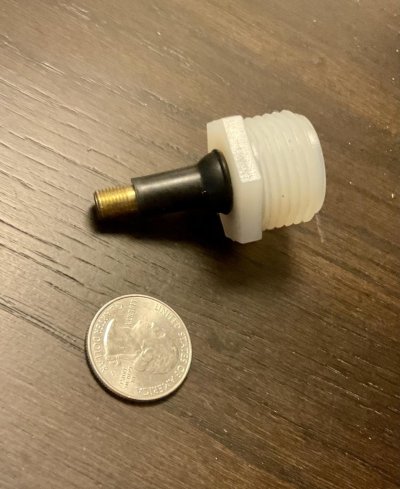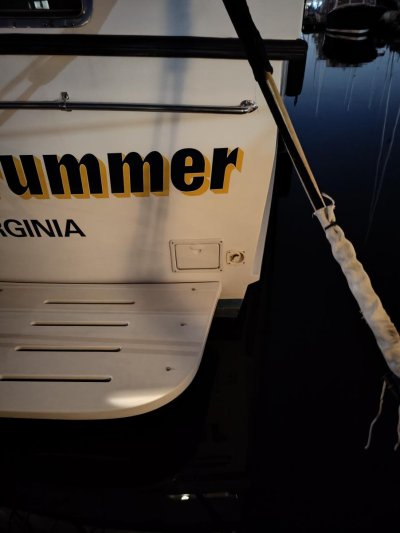Keep freshwater pump on, open all faucets until no water comes out. There would still be water remaining in the lines, p trap, etc. Can I use an air compressor or vacuum to blow these water out of faucets?
If not, I would fill AF to the line following DM's post, but I have not figured out how to shut off water inlet hose to the water heater
When we do winterize, we use compressed air for the fresh water system.
1) Open the water heater drain, let it "empty".
- Our water heater maker manual says if residual freezes, it wont hurt anything; steel tank will be fine. (Yours might be different.)
2) Attach compressor to dock water inlet, blow away.
- Don't bother to exceed rated PSI of your dock water pressure regulator
3) When substantially empty, close the water heater drain.
4) Open and close hot/cold spigots/faucets back and forth, furthest to closest, closest to furthest... a few times... until all you get from each is a mist
5) Let the system rest a bit (have a beer or whatever)
6) Restart the compressor and repeat step 4 a few more times
7) End by opening all spigots/faucets, so the system it totally open, and let the mist blow from them all a bit more
Don't forget interior and cockpit showers, exterior washdowns, anchor washdown, etc etc etc
When we're serious about it, after all that... we disconnnect the freshwater pump inlet
and outlet, use the pump itself to draw an ounce or two of pink through (and then out of) the pump. (You may not want/need to do this step if living aboard.)
WE DO NOT INJECT POTABLE (PINK) ANTIFREEZE INTO OUR FRESHWATER SYSTEM. (It would take about 3 years (hyperbole) of flushing to clean that out...)
If it helps, when we do the AC systems, we use a transfer pump to inject pink. Happens we use Groco fittings, or TRAC makes replacement lids for Groco strainers, to attach a garden hose from transfer pump. The transfer pump will force pink right through our AC raw water pump and thenceward (?) throughout the rest of the system.
Turn pump on, feed it with pink, watch pink outflow from each AC-related thru-hull. Takes about 10 minutes just for the winterizing part.... although I add a bit more time because I also clean the strainer and put in a clean basket at the same time.
-Chris




